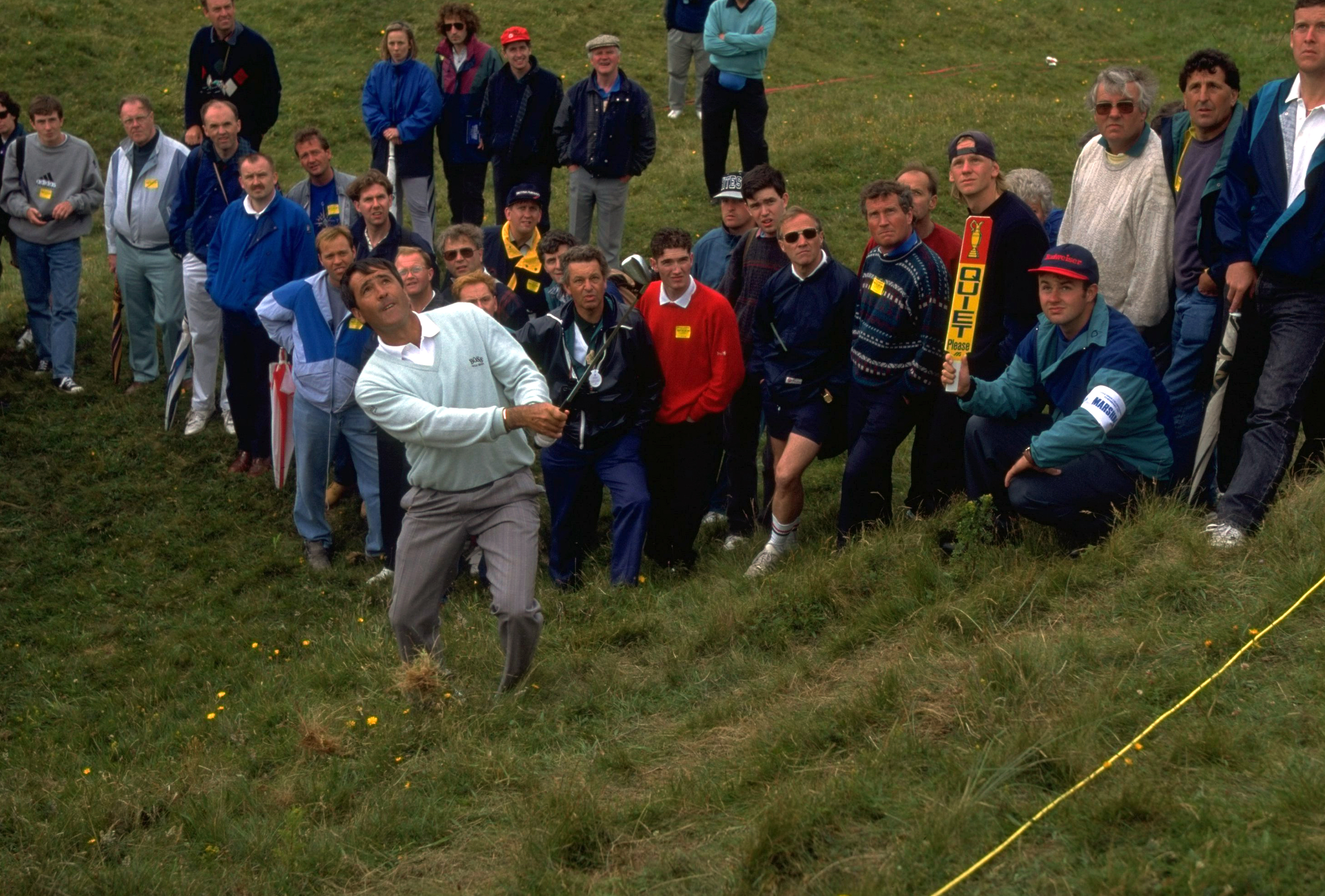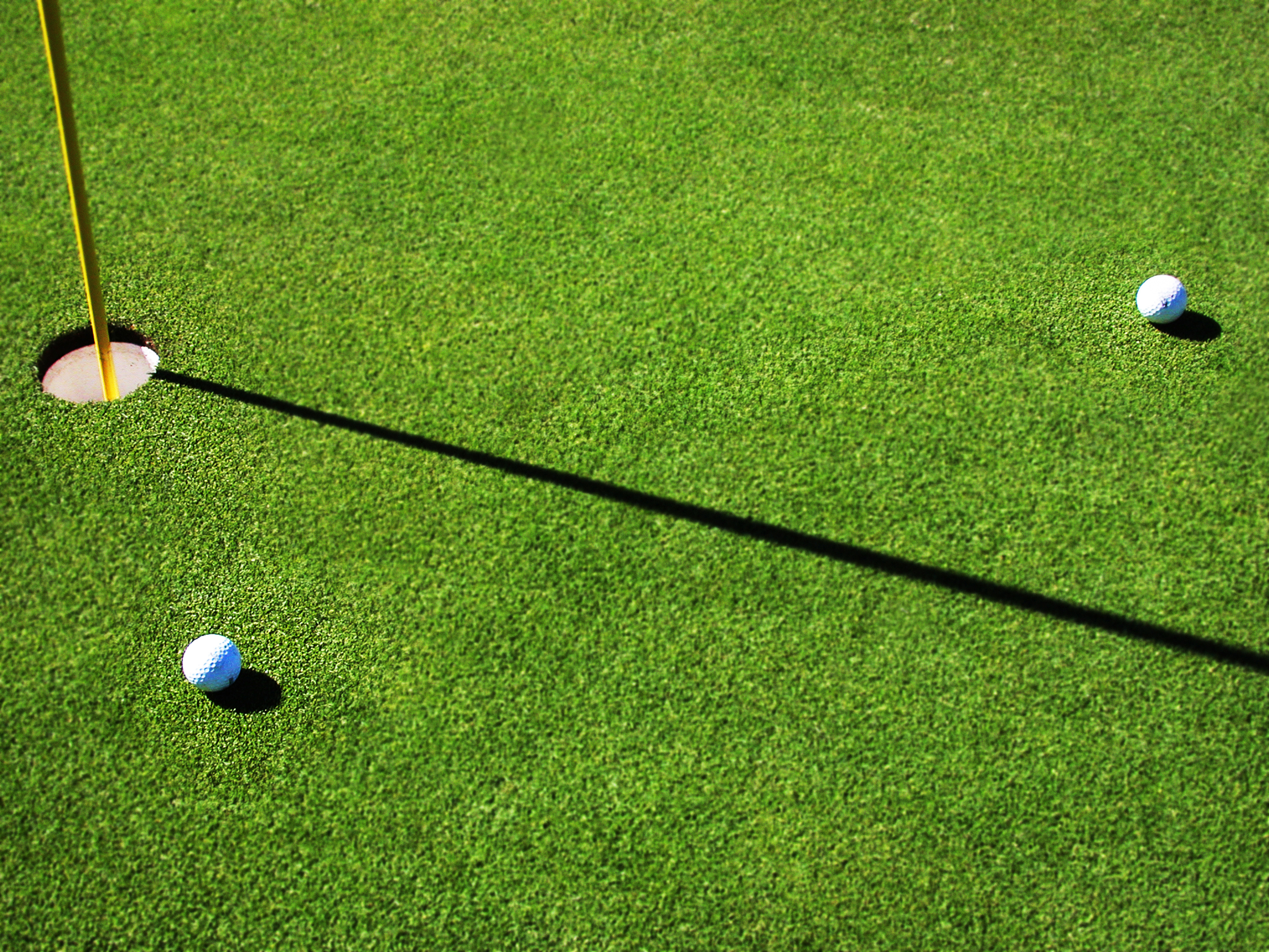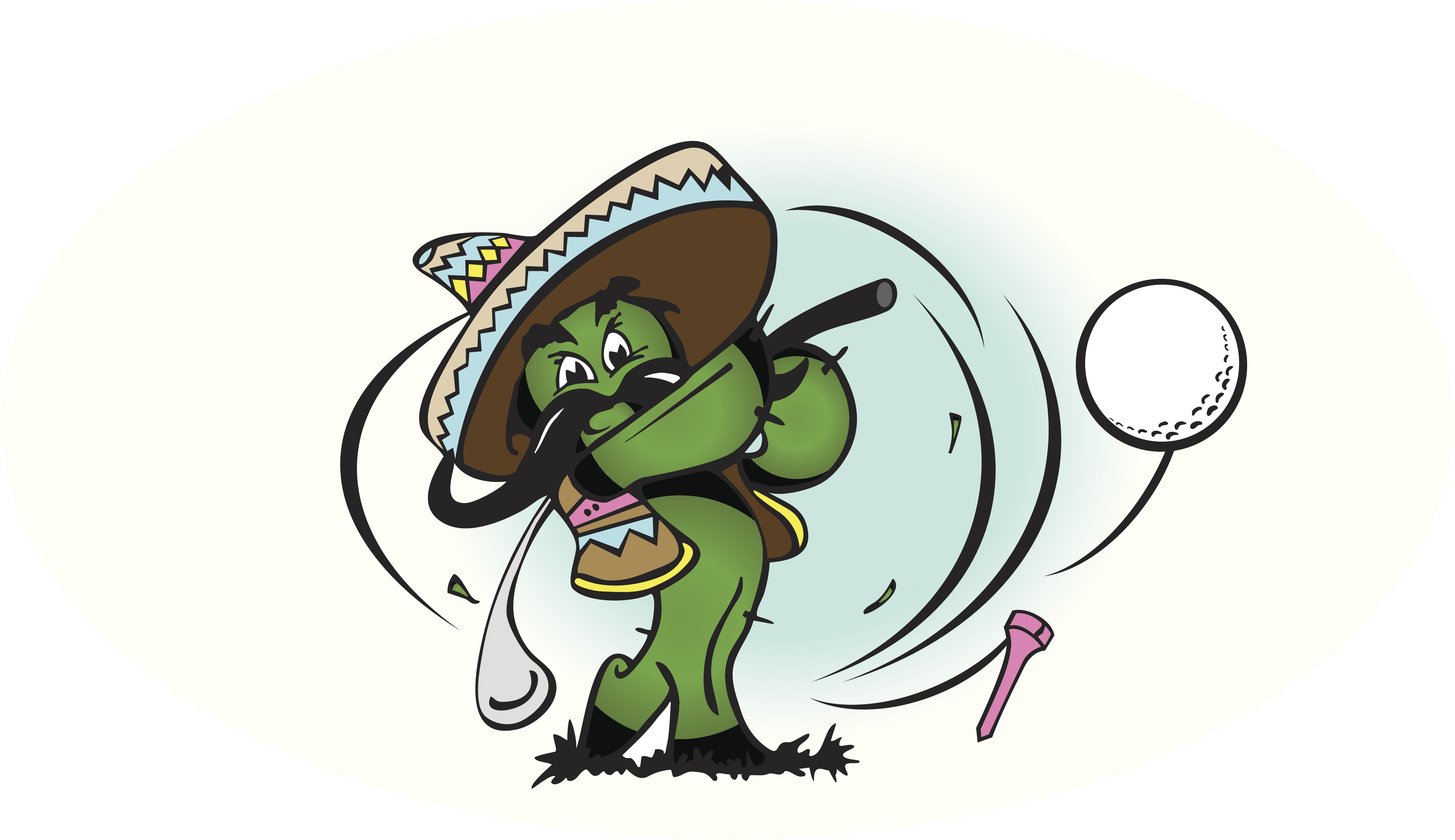32 Most Common Golf Expressions... And How To Use Them!
Golf is a game packed with fascinating customs, manners and rituals, and while most people know the basic terminology, there are still many expressions that might raise the odd eyebrow


The sport we love is a game of paradox; simplicity balanced against complexity. At one extreme, all we need to do is hit the ball into the hole in as few shots as possible. But this is balanced against there being a million ways this can happen. There are minuscule complexities in how we grip the club and make our swing, new rules questions arise all the time, and just when you thought you had seen it all… you find that you hadn’t! To the outsider it can all seem a bewildering mix of lore and law, so let’s take a look at some of the most common golf expressions that may well add to the confusion. Rather than the most obvious terms such as par, bogey and out of bounds, we will concentrate on those about which even some more experienced golfers might not be sure.
Good Good

This occurs only in matchplay, when it’s head-to-head and par is irrelevant. Both players have hit their approach shots close to the hole in the same number of strokes, indeed so close that each would be reasonably confident of making the putt. Few would feel completely comfortable at benefiting from an opponent missing a tiddler, so rather than waste time with both players lining up and putting, one might make the ‘Good Good’ suggestion, offering that both putts are conceded. This is usually accepted, and the hole is halved with the players simply moving on to the next hole. Of course, it’s usually the player with the slightly longer putt who makes the suggestion!
A Mulligan

It’s the start of the round and you’ve just arrived on the first tee without having had a chance to warm up. Nervously, you grip your driver, you make your swing, and look up to see the ball disappearing into oblivion… the worst possible start. Happily, this is a friendly round, and your sympathetic playing partners tell you not to worry, to forget all about that shot, to take a Mulligan - effectively a free replay - and to start again. Although this obviously cannot happen in a competitive round, it is one of golf’s very positive features. If such a thing WAS possible in tournament play, then think back to the 2003 Open Championship at Royal St. George’s when Tiger Woods lost his opening drive. After four days, he finished just two strokes behind the champion Ben Curtis. In theory, with a Mulligan, he would have made a play-off!
Leaking oil

Many golfers are also car enthusiasts, and so it’s no surprise that some golfing expressions are related. Leaking oil refers to that unpleasant experience when you have been playing well up to this point, but then things start to go wrong. You may begin to run out of energy - physically or mentally, or both - or you may start to feel the pressure of the winning line being in sight but know there are others coming up on the rails. Just as a car can start to lose power if it is leaking oil, a golfer can leak his or her own hypothetical oil. Another term for this, especially in the mental game, is to choke.
Dogleg Hole

While there are golf writers who don’t like the term, this is simply the perfect way to describe a hole where the golfer cannot see the green from the tee as it veers one way or the other. This is a brilliant architectural device as it introduces strategic decision making. Can you reach the point where the hole turns, how close to the line of the dogleg can you go in order to shorten the approach, or can you even drive over the corner to straighten the hole. For dogleg, think the 17th on the Old Course at St Andrews or the opening hole at Pebble Beach... or even the pictured 15th at Lewes in East Sussex.
Slam dunk

This is a term borrowed from basketball and refers to a full shot that flies through the air, pitching straight in the hole. In essence, it is the perfect shot as you have hit the ball exactly the distance needed on exactly the right line. Just occasionally, this is even more thrilling, as it is the result of a tee shot and so leads to a hole-in-one. This happened to club professional Michael Block in the final round of the 2023 USPGA when playing alongside Rory McIlroy at Oak Hill.
Spanish hands

There is something beautiful about this term which is used to describe a golfer who has real touch and feel in their short game. It is almost certainly a throwback to the late, great Seve Ballesteros, whose artistry was frequently likened to that of a magician. He could conjur up shots that other golfers would not be able to play, or indeed be able to imagine. This silky inventiveness, mixed with his fiery, Latin temperament, is not something that can be taught. You either have them, or most likely, you don’t!
Subscribe to the Golf Monthly newsletter to stay up to date with all the latest tour news, equipment news, reviews, head-to-heads and buyer’s guides from our team of experienced experts.
Texas Wedge

One of golf architecture’s more recent fashions is to have run-off areas around greens where the grass is short and manicured, and from where you can play a variety of shots. One very popular option that this has allowed, is the opportunity to putt from sometimes a long way off the green. Such a shot is known as playing the Texas wedge. Traditionally many courses in this hot, southern state used to have dry, burnt fairways which made regular chip shots more problematic as it was difficult to get under the ball. While modern agronomy and irrigation methods have eased this in recent years, the term remains.
A Wormburner

A wormburner is a full golf shot that barely rises and hence is considered to leave a heat trail close to the ground in its wake. A polite term for such a shot might be a stinger, as practised very successfully by Tiger, but more often than not, it is the result of a top, whereby the golfer has lifted up too early on the follow-though and so has hit the ball with the bottom part of the clubface or more likely the blade. Although such a shot can often lead to a decent result, the impact can really sting the golfer’s hands.
Temporary Water

Formerly known as casual water, temporary water refers to water sitting on the surface of a golf course in a position where it is not intended to be. Either the result of heavy rain or water rising from a nearby stream or aquifer, the key element is that it is not supposed to be there. Consequently, the golfer has the right to relief, and may move his or her ball away from the water (or snow, or natural ice) to a position where it can be played. This is golf, so obviously it’s slightly more complicated than this, but you get the point!
A Snowman

While making a snowman is usually an activity that is supposed to be fun, this is a slang term for something that no golfer wants to see, the number eight on their scorecard! If you allow a little artistic licence, then the basic shape of a snowman is similar to the number 8, and this has therefore become a golfing expression that is to be avoided but still happens even at the highest level. Indeed, Rory McIlroy began his campaign at the 2019 Open Championship at Royal Portrush with a snowman having hit his opening tee shot out-of-bounds.
The Big Dog

The big dog, also known as the big stick, is quite simply an informal term for the biggest club in your bag, the driver. When it works, we all love it, and there is no shot more thrilling than a well-struck drive that disappears into the ether straight down the fairway. For most of us, however, it is also the hardest club to hit accurately, and is more responsible for wayward shots and lost golf balls than any other club. It is thought to have been adopted into golf from the expression, leader of the pack.
A Fried Egg

This is something that even the hungriest golfer doesn’t want to see as it relates to a shot that has ended up in the soft sand in a bunker or trap. Coming in from height, the ball has plummeted down and displaced the sand, effectively ending up plugged deep down. This makes for a particularly tough shot as the golfer has to dig deep - literally and metaphorically - to get the ball out. The general area often resembles a fried egg, albeit with the white and yellow coloring reversed.
A Lay Up

We all love to watch our golfing heroes having to play strategically out on the course, and the most common decision they have to make is whether or not to go for something - effectively play a shot with a long carry to reach a particular target - or to play a safer shot short of the trouble, a lay up, such as at the water holes at Augusta in The Masters. While the former is obviously more exciting, the lay up can often pay greater dividends as it leads to a short approach that these brilliant players often hit very close to the hole.
A Sherman

One of the most destructive and deflating shots in golf is the shank, when we hit the ball so close to the hosel of the club that is causes the ball to fly off at a very undesirable angle. The hosel is the area where the shaft joins the clubhead, and it is often said that it is very close to being a perfect shot… which of course is scant compensation as we watch our Titleist land in the lake or dense undergrowth. Why Sherman? This is simply rhyming slang for the most commonly used American tank in WWII - Sherman tank, shank.
It’s still you

This is a phrase that is generally used on the green and is something that no golfer wants to hear said to them. As we know, other than the very welcome adoption of ready golf, it is the player furthest from the hole who plays next. If he or she has played a shot and it’s still them to play next, then it’s likely that the shot has not been too successful. When this is actually on the green and the player’s ball is still the furthest from the hole, then it is even more frustrating!
An Air Shot

When someone takes up golf and is a complete novice, it is extremely likely that a good many of their early attempts to hit the ball will actually miss completely. This is known as an air shot, or a whiff, when all we have managed to do is hit fresh air. Having said that, then especially when faced with a tricky lie with the ball sitting in a depression or perhaps between twigs, it is still something that can happen to even the most experienced golfer… often to the great amusement of his or her playing partners!
A Dog Licence

This British golfing expression is one that very much sees the recipient as someone who has their tail between their legs. In regular match play, an emphatic and surprisingly common win is a 7&6 victory where one golfer, or indeed pair, is seven holes up with just six to play, and so uncatchable. Even at the highest level, this still happens. Up until decimalization in the UK in 1971, dog owners had to pay seven shillings and sixpence for a licence for their pet, or in common parlance, seven and six. Hence, a 7&6 victory is widely still known as a dog licence.
Pin-high

There are two basic goals we try and achieve with a golf shot; hitting the ball in the right direction, and hitting it the right distance. Quite often we get one of these elements right without the other, and pin-high relates to getting the distance pretty much spot on regardless of whether we end up left or right of the hole. Therefore, when we hit an approach which misses the green but is the right distance, we can at least console ourselves with the fact that we managed to hit it pin-high.
Front Nine - Back Nine

These are perhaps two of the more obvious golfing expressions, but nonetheless they are worth consideration. There are somewhere in the region of 40,000 golf courses in the world, and the vast majority of these have 18 holes with the front nine denoting holes one to nine, and the back nine used to describe holes 10 to 18. Of these, probably the majority are laid out as two loops of nine, especially the newer ones, and so it’s important to know which you are playing first.
A Gimme

There is nothing more frustrating in golf than getting close to the hole and then missing a short putt. You’ve done all the hard work, but that much-needed par or rewarding birdie still eludes you. In friendly golf, i.e. not in a card-submitting competition, and in matchplay, a happy feature of golf is that you can concede short putts, which are known as a gimme. We all have friends and golfing acquaintances who don’t give putts to their playing partners, but it’s fair to say that if we wouldn’t give ourselves that putt, it’s probably not a gimme!
The flatstick

Just as the driver can be known as the big dog and many other less flattering things, the most frequently used club in our bag, our putter, is also quite often known as the flatstick. It’s not really flat, of course, with the degree of loft often being around three or four degrees as this delivers the best and most consistent roll on the ball. Being the one club that we need on every hole - unless we have chipped in... or had to pick up - it is unquestionably the most important club in any golfer’s armoury.
The Yips

Golf can be the most frustrating game as well as the most rewarding, but with so much of it being in the mind, even the most technically able golfer can develop a case of the yips. This dreaded affliction most commonly manifests in the putting stroke, and can best be described as involuntary wrist spasms when playing a stroke. Generally thought to be caused by anxiety, they effectively make it impossible to make a smooth putt and have impacted many of the sport’s biggest names. Most notable among these is Berhard Langer who had to change to a broom-handled putter and totally different technique, to brilliant effect.
Catch a flyer

When the golfer’s ball ends up in the rough, it will usually behave very differently from on the fairway, and can often lead to a flyer. This can occasionally work to his or her benefit, but more likely than not will be destructive as it means the ball will travel way too far. A flyer occurs because far more grass is trapped between the ball and the club face. This in turn means that there is less traction and backspin, so the golfer may well need to take substantially less club to achieve the desired carry.
A Lip Out

Rubbing salt into the wounds of a missed putt, a lip out describes the extremely frustrating occurrence of your golf ball almost dropping into the hole, but instead following the line around part of the rim of the cup and then agonisingly staying above ground. This can be as much as 360 degrees, even more, and is a whisker away from perfection. At its worst, the lip out can even put spin on the ball and expel it away from the hole, meaning the next one isn’t a gimme either!
Airmail The Green

Whether it’s the result of a flyer, not really knowing the distance to the hole, selecting the wrong club or a rush of blood to the head, we occasionally hit an approach that we are convinced is just right, only to see it fly beyond into thick, impenetrable rough... or worse. This frustrating occurrence is known as airmailing the green; completely clearing it without so much as the briefest touchdown.
Dormie

The word dormie comes from the French verb dormir - to sleep. It is used in matchplay to describe when a golfer is the same number of holes ahead (or behind), as there are left to play. So if you are three holes up standing on the 16th tee, you are dormie, or dormie three. The logic behind this is that you could fall asleep and still not lose. However, it should therefore only be used if matches can be tied. If extra holes/sudden death are an option, no-one can be dormie. A similar word, dormy, is used to describe accommodation at a golf club… where you really CAN go to sleep.
Ready Golf

This is a very healthy concept that entered into golfing parlance and general usage around 2020. Other than in matchplay, where tactics are so vital, then it is no longer necessary to wait strictly for the person furthest from the hole to play. If someone is simply chipping out sideways or escaping from sand, or if one player cannot possibly reach the green whereas someone further away is capable of reaching, then this makes perfect sense and leads to less wasted time and quicker rounds. Even if it is because one of your playing partners is simply unprepared, then ready golf is an excellent concept.
Handicap Bandit

Ah… golf’s most popular figure! Sadly, while the sport is very much one of honor and integrity, there are some for whom winning is everything. Also known simply as bandit, sometimes as pot-hunter, and sometimes as something not publishable on this website, these golfers do all they can - which is usually nothing - to keep a high handicap. This in turn puts them in a position to win more competitions, matches and prizes. Most clubs have them, and while the World Handicapping System is enabling us all to put in unlimited cards, there is nothing to stop the bandit from putting in bad ones!
Unplayable Lie

There are endless frustrations in golf, many of them of our own making, but one that is particularly galling is to find your ball sitting in a position where you just cannot hit it. This might be because it is sitting down in some dense jungle or stuck high off the ground in a bush. It might be because you cannot swing a club at the ball. Whatever the reason, the penalty incurred for taking a drop always feels hurtful, and completely unfair, even though it was you who hit it there in the first place! Sadly, it’s usually best to swallow your pride, take the penalty, and move to a playable position.
Plugged Lie

While a plugged lie sounds as though it might be something an electrician might fix, it refers to a ball which has come to rest in its own pitchmark, usually from height or on some particularly wet or boggy ground. All you can see is the top half of the ball, and the chances of getting much closer with your next shot are equally dead and buried. Also known as an embedded ball, thanks to one of the 2019 rule changes, then unless you are in a bunker or a penalty area, you are entitled to a free drop.
Knee Trembler

This is the term used to describe a putt - almost a gimme but not quite - that you really should get but which is still missable. Your only thought is “I’d better not miss this”, which in turn makes the putt twice as long. Playing in a friendly, or with nothing on it, you would hole it every time. But because it’s to win the match, or to beat your handicap, or to save face in front of your deadly enemy, nerves kick in and it becomes a real knee trembler. Good luck!
The Nineteenth Hole

This is the very place where golf course design is debated endlessly, but about which no budding architect should complain; the club’s friendly, banter-filled bar. You’ve played your match or medal, you’ve had some highs and lows, you’ve braved the elements or sweated in the sun, and you’ve definitely left some shots out on the course. But you’ve earnt your reward, and it’s now time to excite/bore your friends with stories of what happened, and what should have happened. If only…!

Rob has been playing golf for over 45 years and been a contributing editor for Golf Monthly since 2012. He specialises in course reviews and travel, and has played over 1,250 courses in almost 50 countries. In 2021, he played all 21 courses in East Lothian in 13 days. Last year, his tally was 78, exactly half of them for the first time. One of Rob's primary roles is helping to prepare the Top 100 Courses of the UK&I, of which he has played all, as well as the Next 100 where he is missing two in Scotland and two in Ireland. He has been a member of Tandridge for over 30 years where his handicap hovers around 15. You can contact him at r.smith896@btinternet.com.